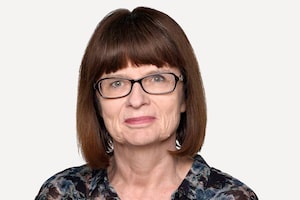Green Party Leader Elizabeth May, NDP Leader Tom Mulcair, Bloc Quebecois Leader Gilles Duceppe, Conservative Leader Stephen Harper, and Liberal Leader Justin Trudeau pose before the French-language leaders' debate in Montreal Sept. 24, 2015.POOL/Reuters
Next week Justin Trudeau will be sworn in as Canada's 23rd prime minister, but the dust has yet to settle on the lengthy – and fascinating – campaign that brought him to power.
[Read The Globe's digital timeline of the election campaign.]
The 78 days of electioneering spanned three long weekends, and generated a veritable mountain of coverage. This newspaper alone published no fewer than 231 news and analysis articles, 134 photos and 122 columns, with even more material appearing online.
I counted it all – but not just to see how much there was. As public editor, I wanted to find out whether the coverage was balanced – and fair.
Readers had their doubts, and two articles in particular garnered more complaints than any of the others: an editorial in which The Globe endorsed the Conservatives (but not their leader) and a lengthy profile of Mr. Trudeau. Both stories were well read, but the first left some certain The Globe is pro-Conservative while, to others, the latter meant it was pro-Liberal.
What did I find, checking the coverage in the newspaper? In those news articles that featured one party or leader over the others, the Conservatives led the way. There were 53 pieces that focused primarily on Stephen Harper, compared with 45 for the New Democratic Party's Tom Mulcair and 38 for Mr. Trudeau. The remaining 95 stories were on the race in general, and referred to some, if not all, of the leaders.
When it came to visuals, the tables were turned: There were 43 photos of Mr. Trudeau and 37 of Mr. Mulcair but just 24 of Mr. Harper. (Another 30 were devoted to other aspects of the race, or showed all three together.)
With photo exposure, the numbers are clear to see. And in this case, the lopsided distribution was accentuated late in the campaign when both opposition leaders were featured in heavily illustrated profiles.
But with news and views, the relationship between quantity and quality is less clear-cut. True, there were more stories about the Conservatives, but being the governing party put them more in the spotlight, and many of the articles also included what the Liberals and New Democrats were saying.
And receiving additional coverage isn't necessarily a good thing. For example, Globe columnists also paid more attention to the Conservatives. Columns can be analytical rather than opinionated, but those on Mr. Harper were much more the latter – and weighted heavily against him.
No fewer than 19 of the 45 columns generally about the Conservatives were critical of his leadership or policies. In comparison, there nine NDP columns and 12 about the Liberals, but in each instance only one was negative (barely so, in one case).
What do I consider negative? Here are some examples (the leaders in question should be apparent):
1. "Looking like a boy and shouting to be heard… a trust-fund kid who inherited his dad's Mercedes and never had to do hard manual labour to make a living."
2. "They've been serving up Pablum … He's a leader not normally afraid to stand on principle or take risks."
3. "If not literally true, then metaphorically true: [He] has refused to lift a finger to help desperate refugees. He doesn't care if babies die. He's the man without a heart."
Columnists, of course, are expected to have a point of view and, whatever your views, you will agree with some and find others infuriating. But was The Globe coverage itself balanced and fair?
In my view, it is important when making that call to reflect on it as a whole. And to recognize that, while journalists believe in presenting a wide array of views, they also have to report what is actually happening. If Mr. Mulcair was making news, he got more coverage. If Mr. Harper's leadership was an issue, the focus shifted to him.
Also, those who complained about the lengthy feature on Mr. Trudeau one week and Mr. Mulcair the next should know that, even though he's more of a known quantity, Mr. Harper was the subject of two meaty profiles (one of which appeared before the election call).
Elizabeth May of the Green Party was less fortunate. Of the 54 election-related columns not about the three main parties, just two were dedicated to her, one of which she wrote herself. References to the Greens also appeared in a number of news stories, but coverage of the party was slight. (As was that of the Bloc Québécois, with one column and a story count of three.)
In the end, the most important task for a news organization is to provide the information people need to make a well-informed choice. And, in general terms, I believe The Globe covered all the bases. But for a second opinion, I turned to political scientist Nelson Wiseman, director of the University of Toronto's Canadian studies program.
He read all the coverage and found it, on balance, "perfectly fair," except perhaps for the photos. As a sitting prime minister, he says, Mr. Harper deserved more than barely half the 43 images accorded Mr. Trudeau (who, like Mr. Mulcair, benefited from the fact that the big, black and white photos accompanying their profiles in the Focus section were especially striking).
As for the news stories, Prof. Wiseman argues that it shouldn't be surprising that the Liberals had the fewest. After all, they began the race in third place and didn't really pull ahead until just before election day.
But it's safe to say they will be getting plenty of coverage now.
 Sylvia Stead
Sylvia Stead